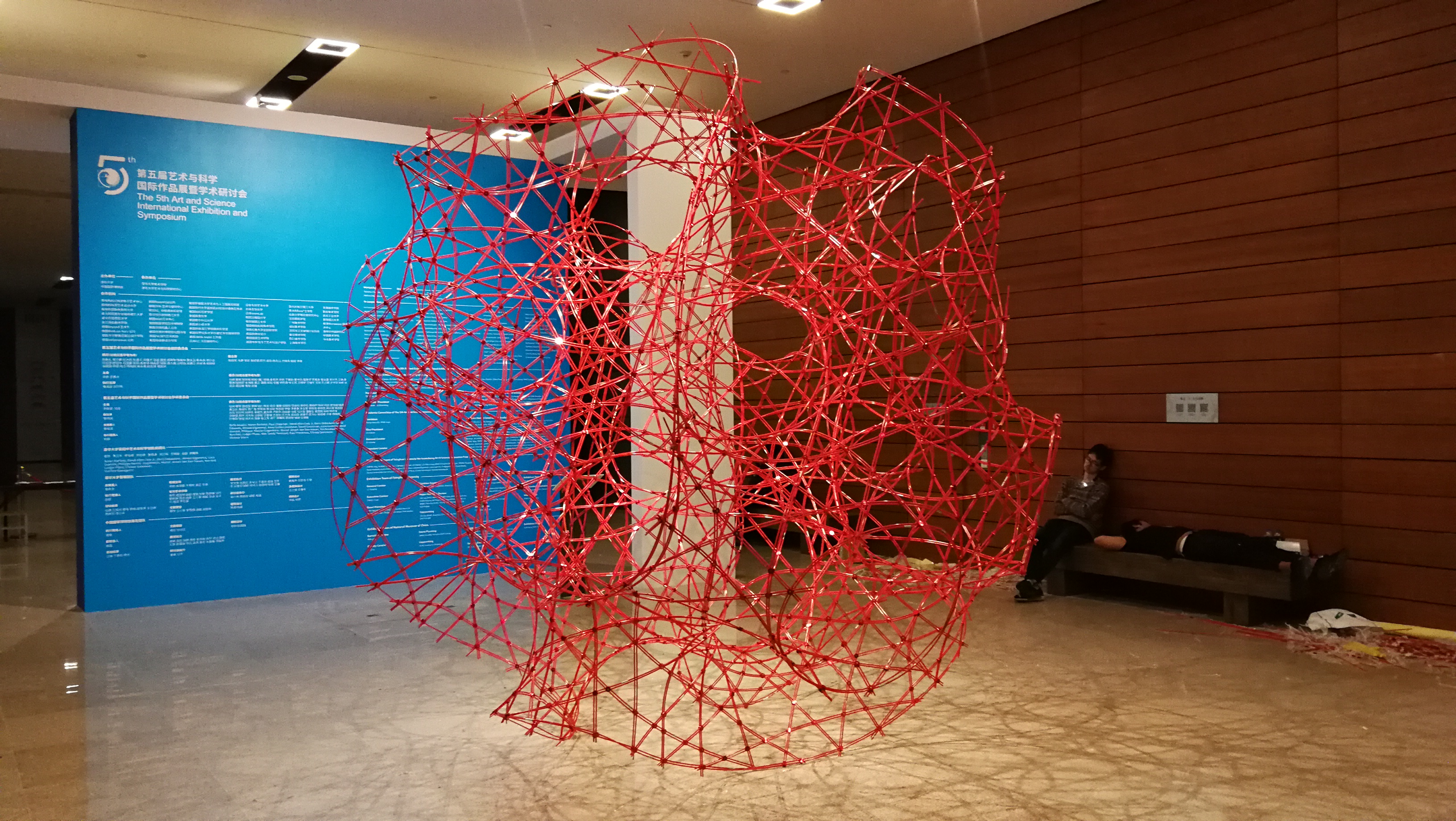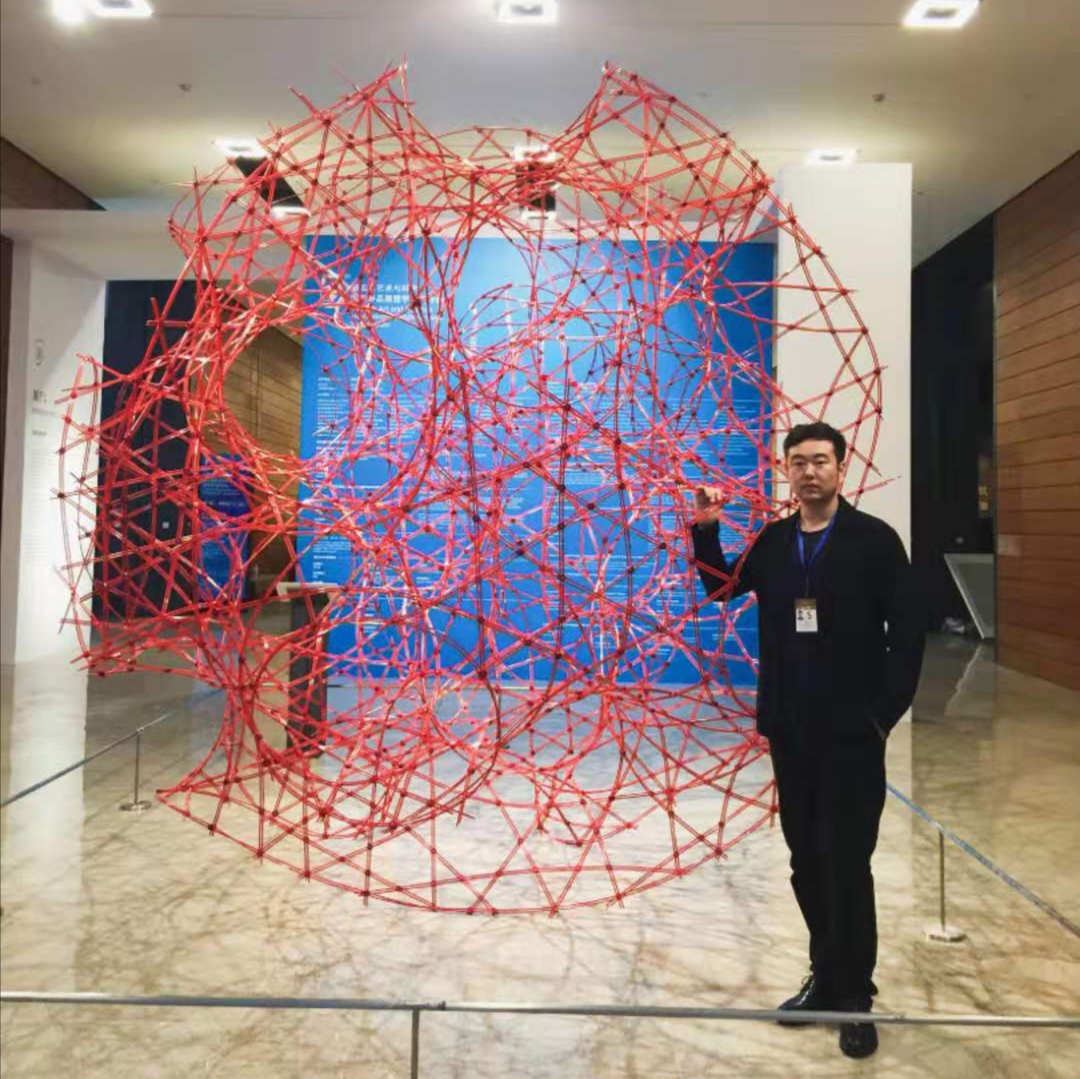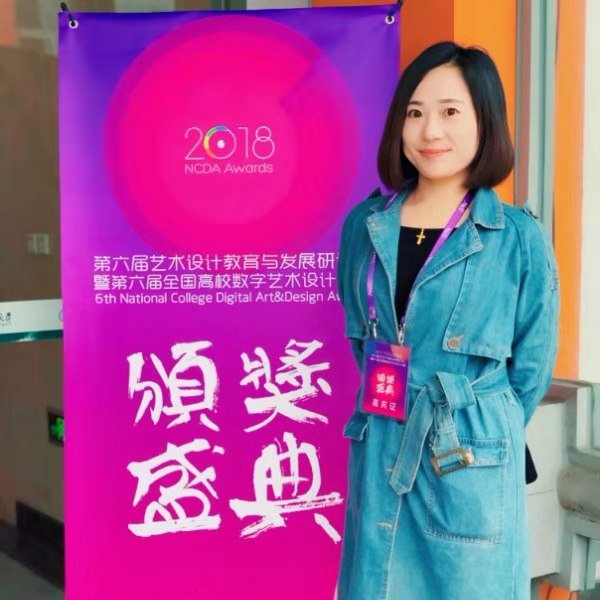From November 2nd to 30th, the 5th International Exhibition of Art and Science & Academic Symposium was held in the National Museum of China. It was co-hosted by Tsinghua University and the National Museum of China, and co-organized by the Academy of Arts and Design and the Arts and Science Research Center of Tsinghua University. In the very center of the exhibition hall, the work 3D Woven Chinese Knot, which was jointly completed by the Huang Weixin Studio of the School of Architecture of Tsinghua University and the Department of Digital Media Technology of DNUI, was particularly eye-catching.

The 5th International Exhibition of Art and Science & Academic Symposium
This work was inspired by the unique hand-woven crafts called the Chinese knot. It was composed of numerous rods and aluminum nodes. As the main components, the nodes were designed by Liu Yang and Li Xiang, teachers of the School of Digital Arts and Design of DNUI, and teachers of Tsinghua University thorough discussions. In the end, about 4,000 sets of parts were produced in cooperation with Chinese Textile Machinery (Dalian) Solenoid Valves Manufacturing Co., Ltd., using carbon fiber materials, the anodizing process and CNC machining forming. All materials of the work are recyclable.

Liu Yang, Teacher of the School of Digital Arts and Design

Li Yi, Teacher of the School of Digital Arts and Design

Li Xiang, Teacher of the School of Digital Arts and Design
Liu Yang said: “The large-scale 3D work conveys traditional culture through unique form. Its form and construction is the interpretation and restructuring of the cultural symbols “knot” and “weaving”, expressing the charm of traditional culture and modern technology.”
Li Xiang said: “In the era of big data, the forms of art are more diverse. We should seize the opportunity and try different art forms and demonstration approaches.”
In the selection of node color, after rounds of comparison by Li Yi, teacher of the School of Digital Arts and Design, China Red (#DD0017) was ultimately chosen as the main color, which symbolizes celebration, liveliness and harmony. She said: “Generative design provides a brand-new vision and changes the design process fundamentally. In the long run, this design process will establish its status as a new discipline.”
The process of the project was complicated and the time was extremely limited. Immediately after the proposal was approved on October 8, the teachers and students of DNUI began to purchase raw materials, arrange personnel, process parts, and pre-splice in Dalian. In late October, the components were delivered to Beijing for final assembly. In just half a month, the Huang Weixin Studio from Tsinghua University, together with the School of Digital Arts and Design, as well as the Virtual Reality majors in Class 19101 from the Higher Vocational and Technical School of DNUI completed the marking and assembly of the nodes with high efficiency.
It is reported that the theme of this exhibition centers on “AS-Helix: The Integration of Art and Science in the Age of Artificial Intelligence”. Under the consensus of serving humanity, art and science go hand in hand and complement each other to form an integrated spiral structure called AS-Helix, where A stands for art and S stands for science. AS-Helix implies the deep integration of art and science, enjoying a spiral development of innovation and collaboration between the two. Committed to exploring the beliefs and ideals of the harmonious development of art and science, it has built a prospective international communication platform with modern characteristics for artists, designers, engineers and scientists.

